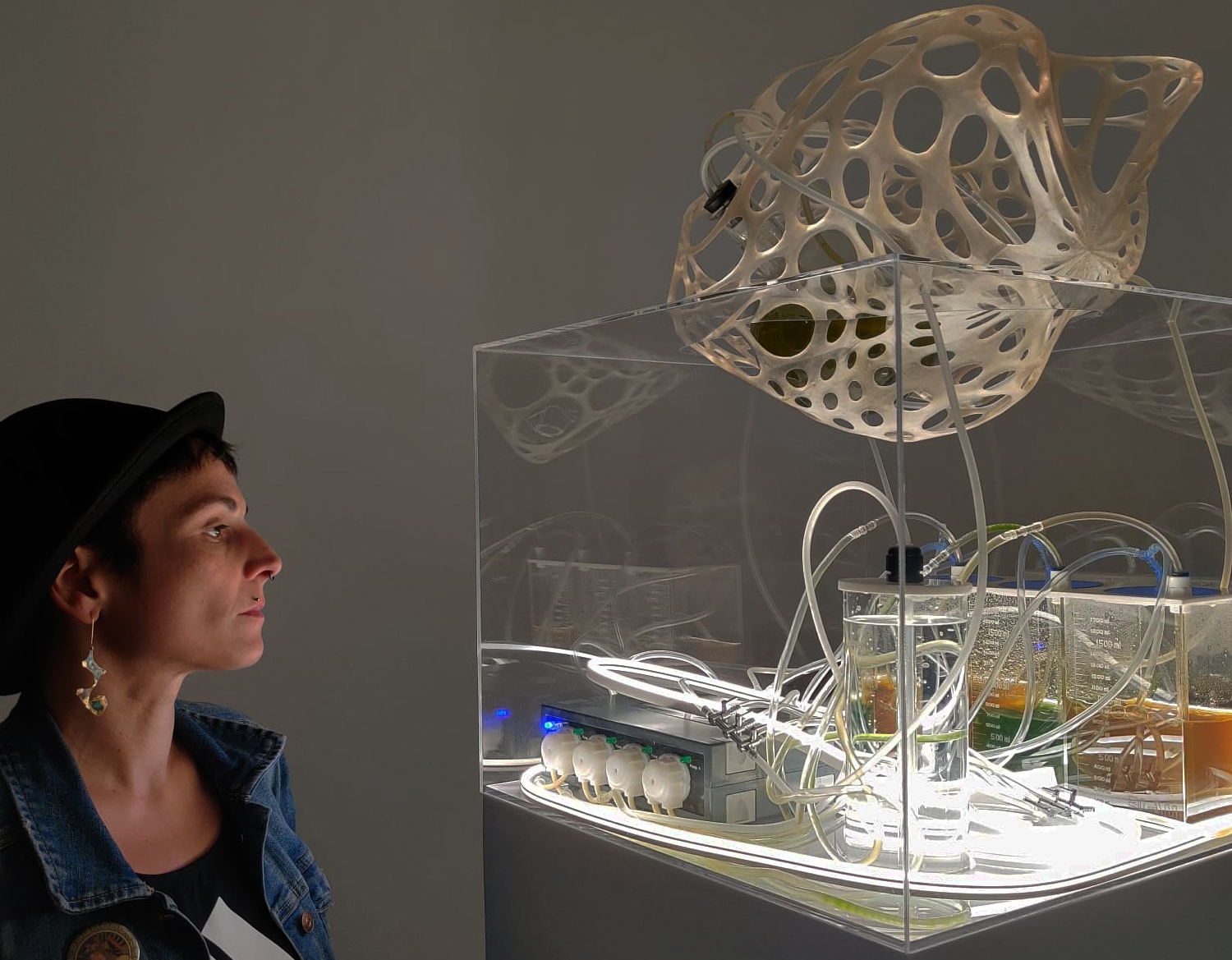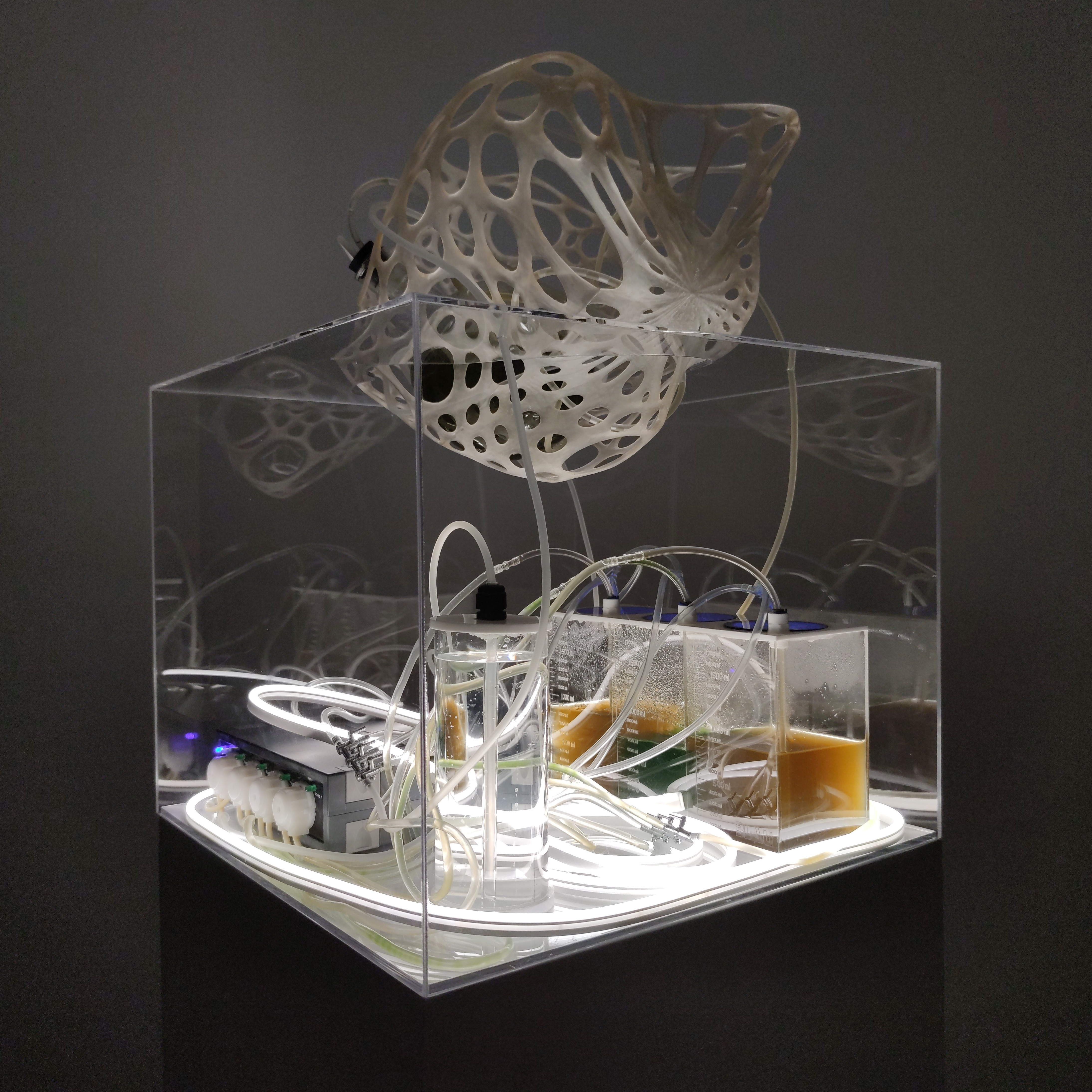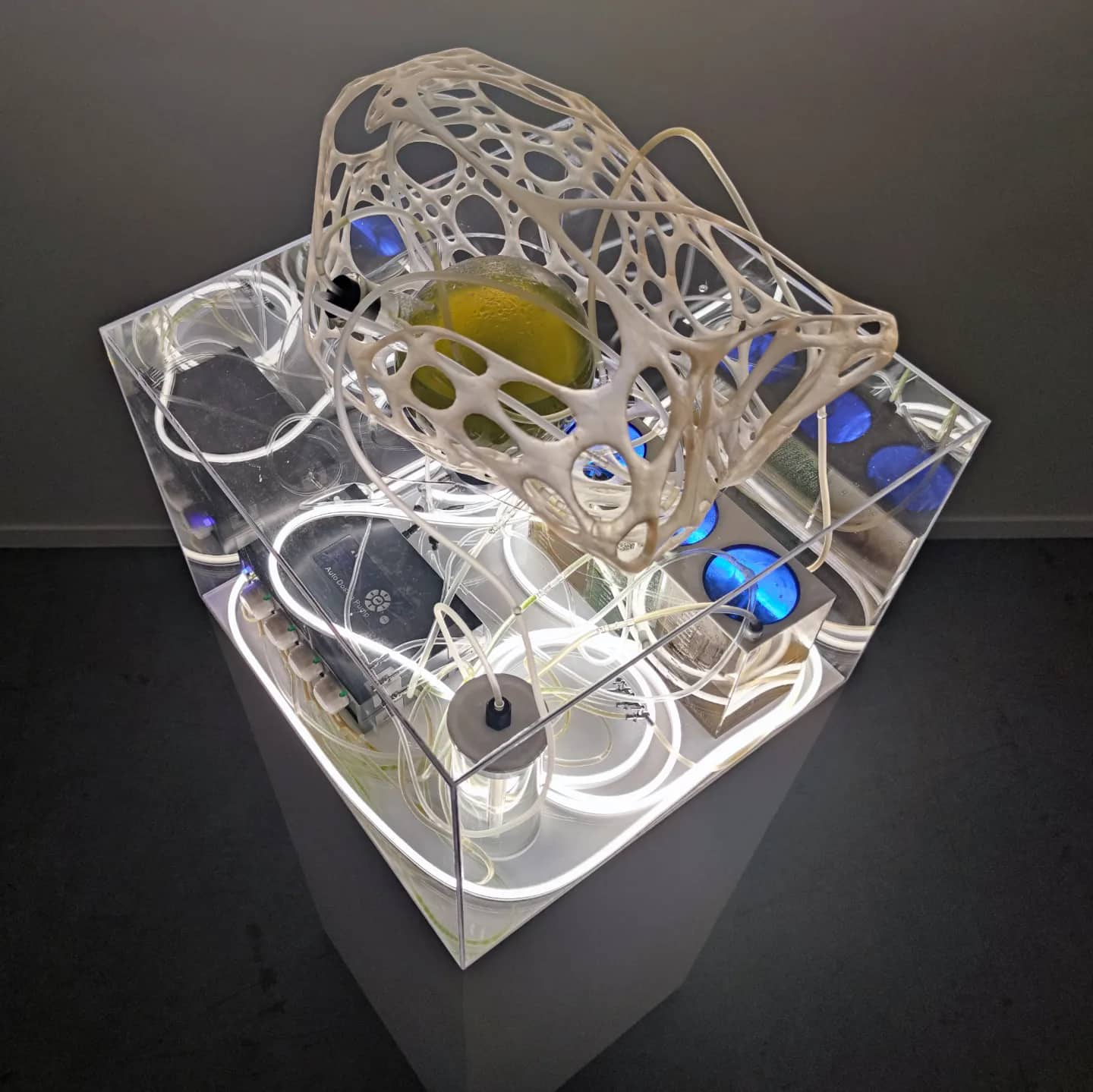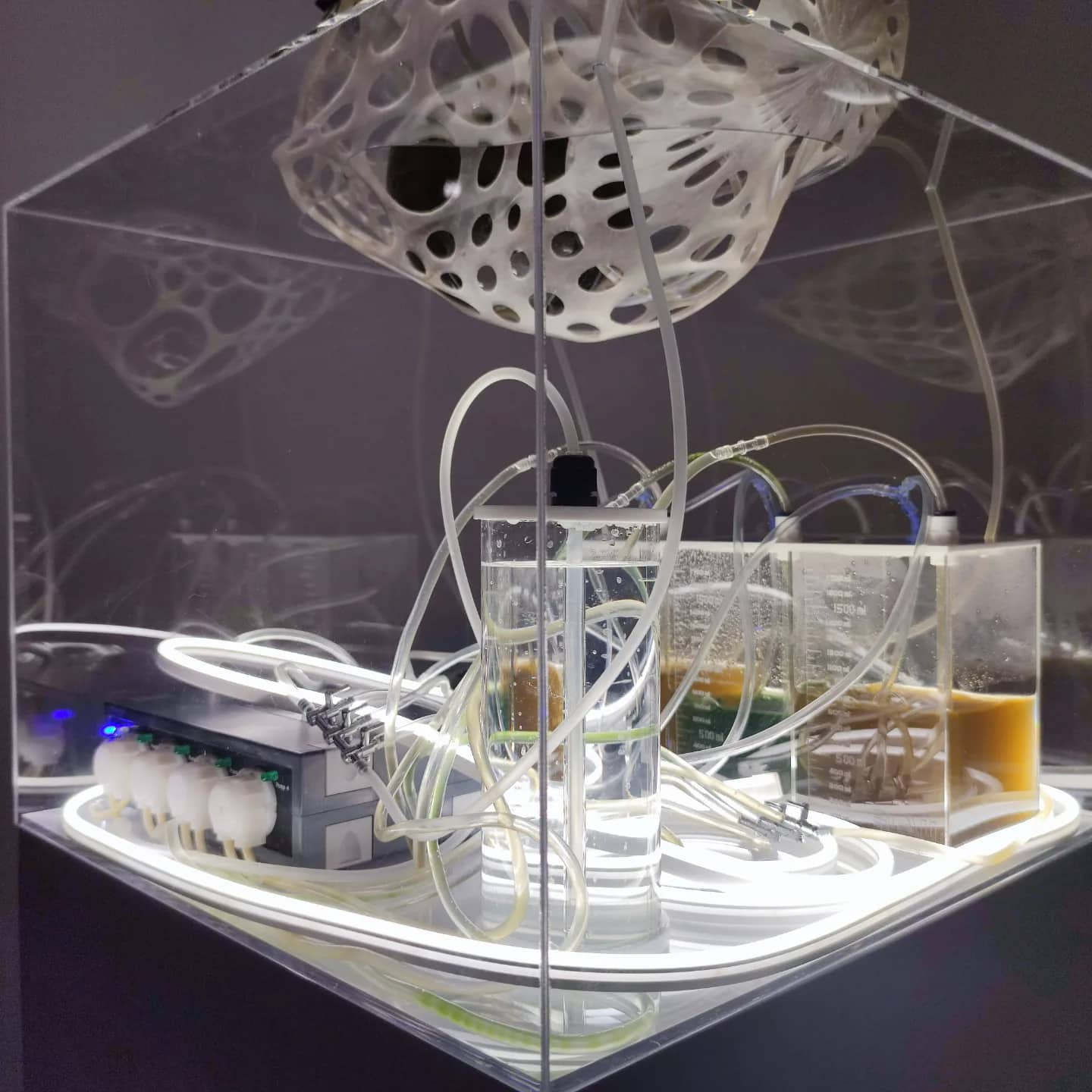ThecaThe function of the invisible
©Fara Peluso - 2022
In collaboration with
PhD Giulia Ghedini ‘Functional Ecology Group’ -
Gulbenkian Science Institute Oeiras - Lisbon (Portugal)
Supported by
Cultivamos Cultura Lisbon

Theca is a ‘cyborg’ sculpture, a hybrid living installation which exists through the coexistence of separated entities, their maintenance through the interaction and the share of informations between analog and digital, organic and inorganic matter, living and non-living entities. ‘Theca, The function of the invisible’ is the result of a multidisciplinary research that the artist-designer Fara Peluso is developing since years about the Diatoms micro-algae, focusing on their ecology and the importance of their invisible existence for the maintenance of a biodiversity and the life of many species including the human beings.
The
project, supported and developed in collaboration with PhD Giulia
Ghedini leader of Functional Ecology Group-Gulbenkian Science
Institute Oeiras and Cultivamos Cultura Lisbon, is a Post-human
feminist and artistic practice which shows how humans always have
been bonded with this organisms and it questions how come and when
the conceptions and social constructions defined human species as a
separated and autonomous entity (Lynn Margulis).
A post-human feminist and artistic practice which shows how humans always have been boned with diatoms organisms. The artwork has a hybrid identity because through the philosophical work of Donna J. Haraway about human&machine, human&animal relations it supports the idea that ‘a cyborg is cybernetic organisms, a hybrid of machine and organisms, a creature of social reality as well as a creature of fiction’ (Donna Haraway).
The installation proposes a new way of observing the environment focusing on micro scales organisms and their relationships with other living entities. The work wants to question how humans can change their models, contemplating the phenomena of coexistence in Nature, it questions how to adjust human behaviours and change ‘mental models’ with the final goal to redesign the human hierarchical social constructions.



